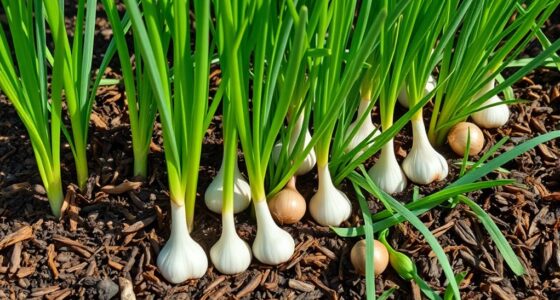Imagine stepping into your garden and being greeted by a burst of color and life, each plant telling its own unique story. The polka dot plant, with its delightful speckled leaves, does just that. This charming beauty, scientifically known as *Hypoestes phyllostachya*, isn’t just a feast for the eyes; it’s also a versatile companion in your gardening journey. By pairing it with the best companion plants for polka dot plants, you can create a vibrant tapestry that not only enhances visual appeal but also promotes healthier growth. Whether you’re a seasoned gardener or just starting out, the right combinations can transform your garden into a personal oasis, filled with joy and serenity.
Let’s explore how to elevate your garden experience by choosing the perfect companions for your polka dot plants.
Key Takeaways
- The polka dot plant is recognized for its striking foliage and can be paired with various companions.
- Best companion plants for polka dot plants enhance aesthetics and overall plant health.
- Incorporating vibrant colors and textures can invigorate your garden space.
- Companion planting supports a dynamic ecosystem, benefiting all plants involved.
- Creating a harmonious garden encourages personal enjoyment and relaxation.
Understanding the Polka Dot Plant
The Polka Dot Plant is a delightful addition to your indoor or outdoor garden. Known for its vibrant, spotted leaves, this plant typically grows between 12 to 24 inches tall and spreads 12 to 18 inches. To keep your Polka Dot Plant thriving, it is important to understand its characteristics and ideal growing conditions.
Characteristics of the Polka Dot Plant
This plant features distinct, cheerful leaves that can vary in color, adding a playful touch to any space. With hues ranging from light green to rich magenta, these spots create a beautiful contrast against the darker foliage. When considering polka dot plant care tips, pay attention to its compact growth habit, which can make it an attractive focal point in diverse plant arrangements.
Ideal Growing Conditions
To ensure optimal growth, you should meet the polka dot plant sunlight requirements. These plants flourish best in indirect sunlight and thrive in semi-shaded areas; direct sunlight may scorch their delicate leaves. Use rich, well-draining soil with a slightly acidic to neutral pH for planting. Maintaining high humidity levels is crucial, as the Polka Dot Plant likes its soil to be evenly moist but not soggy. These factors combined will contribute to a healthy and vibrant plant.
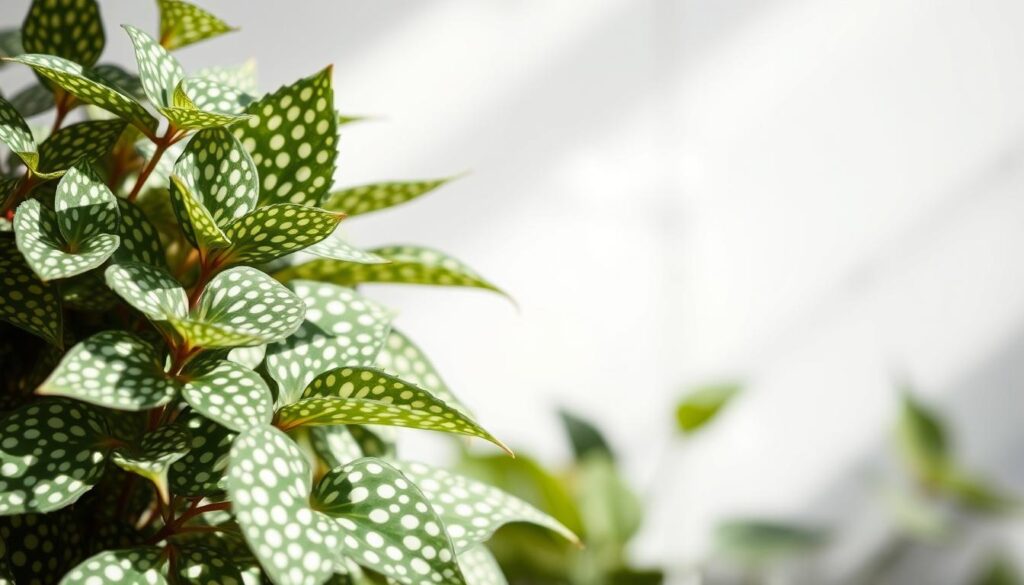
The Importance of Companion Planting
Companion planting is a gardening practice that brings together various plant species to foster mutual benefits. This method can lead to healthier plants, improved yields, and an overall thriving garden environment. By choosing the right polka dot plant companion plants, you can effectively enhance the growth and vitality of your polka dot plants.
Benefits of Companion Plants
Utilizing companion planting provides several key advantages. Firstly, certain companion plants can improve soil quality and retain moisture, which is essential for the health of your polka dot plants. Additionally, they can deter harmful pests, offering a natural alternative to chemical pesticides. By increasing biodiversity, these companions can also attract beneficial insects, providing essential pollination and pest control.
How Companion Plants Support Each Other
Companion plants offer support in various ways, ensuring a healthier growing environment. For example, some plants might provide shade to sensitive species like the polka dot plant, while others may fix nitrogen in the soil, promoting overall fertility. Careful selection of companion plants enhances the benefits of companion planting, leading to a vibrant and resilient garden.
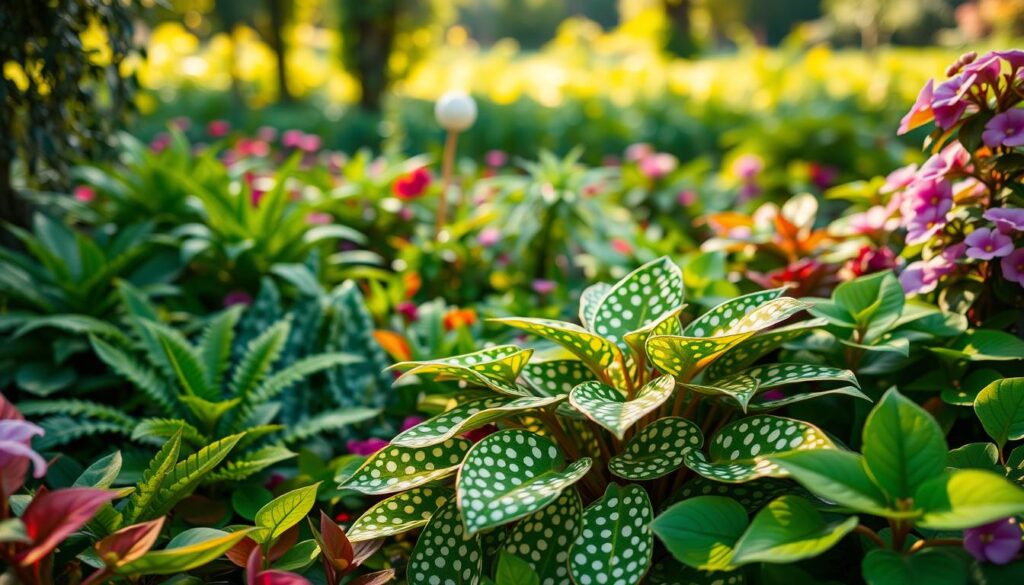
Best Companion Plants for Polka Dot Plants
Choosing the right companions for your polka dot plants can elevate their beauty while supporting their health. The best companion plants for polka dot plant thrive under similar conditions and can even aid in polka dot plant pest control.
Coleus
Coleus plants bring vibrant foliage that enhances the striking appearance of polka dot plants. Their colorful leaves create a stunning contrast and help provide shade, allowing polka dot plants to flourish. This pairing not only looks fantastic but also fosters a micro-ecosystem that can deter pests.
Pansies
Pansies are a wonderful addition to your garden. They thrive in similar growing conditions, offering a soft color contrast that complements the bold patterns of polka dot plants. This companion plant can also attract beneficial insects, which assist in pest management, ultimately supporting your polka dot plant’s growth and vitality.
Begonias
Begonias present another excellent option for companion planting alongside polka dot plants. They come in various shades, allowing you to choose hues that either match or contrast with the polka dot leaves. Beyond aesthetics, begonias contribute to effective polka dot plant pest control by deterring unwanted soft-bodied insects, ensuring a healthier garden.

Creating a Vibrant Garden with Companion Plants
Designing a beautiful garden involves careful consideration of plant placement and aesthetics. Focusing on the vibrant hues of your polka dot plants can enhance your overall garden design. By exploring color combinations and height variations, you can create a space that is both visually pleasing and harmonious.
Color Combinations
Combining different colors in your garden can highlight the unique patterns of polka dot plants. Choose shade-loving companion plants, such as Begonias, to complement the vibrant coloring. This not only creates visual continuity but also makes each plant stand out beautifully within the garden landscape.
Height Variation
Incorporating plants of varying heights contributes to an engaging garden layout. Taller plants, such as Coleus, placed behind the shorter polka dot plants, add depth and dimension. This arrangement draws the eye throughout the garden while ensuring all plants receive adequate sunlight, thereby promoting effective polka dot plant care tips in your landscape.

Seasonal Considerations for Planting
When planning your garden, understanding the seasonal planting strategies becomes crucial for the health and vibrancy of your polka dot plants. Each season brings unique opportunities and challenges that can affect growth, particularly in relation to the polka dot plant watering schedule.
Spring Planting Tips
Spring is an ideal time to introduce polka dot plants into your garden. As temperatures rise above 50°F, the conditions become perfect for planting. Start by ensuring the soil is rich and fertile. Mixing in compost will boost nutrient levels, creating a healthy environment for growth. You can also take advantage of longer daylight hours, which benefit the overall plants’ development.
Fall Companion Planting
As fall approaches, consider using a different approach for your polka dot plants. Look for companion plants that are tolerant of cooler temperatures. This not only prepares your garden to withstand the upcoming winter but also enhances resilience. Grouping these plants together creates a layered effect and promotes a harmonious ecosystem. Regularly checking the polka dot plant watering schedule helps maintain moisture levels, especially as days grow shorter and temperatures drop.

Pollinators and the Polka Dot Plant
Bringing life to your garden involves more than just planting beautiful flowers. Polka dot plants play a crucial role in attracting vital pollinators such as bees and butterflies. By incorporating companion plants that attract pollinators, you enhance the biodiversity and health of your garden ecosystem. These creatures not only contribute to pollination but also support your plants’ overall growth.
Attracting Bees and Butterflies
Creating a haven for bees and butterflies requires understanding their preferences. These pollinators are drawn to vibrant, fragrant blooms that offer both nectar and pollen. Choose plants with diverse colors and shapes to encourage a wider range of pollinators. The benefits of attractive blooms extend beyond aesthetics; they foster a lively garden environment teeming with activity.
Companion Plants that Attract Pollinators
Selecting the right companion plants can significantly impact the success of attracting pollinators. Consider incorporating the following:
- Pansies
- Coleus
- Marigolds
- Lavender
- Sunflowers
All these companion plants offer unique blooms that cater to various pollinators. By strategically planting them alongside your polka dot plants, you create an enticing landscape that promotes both allure and functionality. Emphasizing the benefits of attractive blooms not only enriches your garden but also contributes positively to the environment.

Soil and Watering Tips
Creating the right environment for your polka dot plant is essential for its growth and overall health. Understanding the specific soil requirements and adhering to the correct polka dot plant watering schedule can significantly enhance your gardening experience.
Soil Requirements
Your polka dot plant thrives in a well-draining, nutrient-rich soil that maintains moisture without becoming overly soggy. A suitable soil for companion plants should have a pH level ranging from 6.0 to 7.0, allowing for optimal nutrient availability. Consider using a mix that includes peat moss and perlite to ensure good drainage and aeration.
Watering Companion Plants
Establishing a solid watering routine is critical for the health of both your polka dot plant and its companion plants. Regular observation of soil moisture is vital; water when the top inch of soil feels dry to the touch. Pairing plants with similar moisture needs promotes a more coherent watering strategy that keeps your garden flourishing.
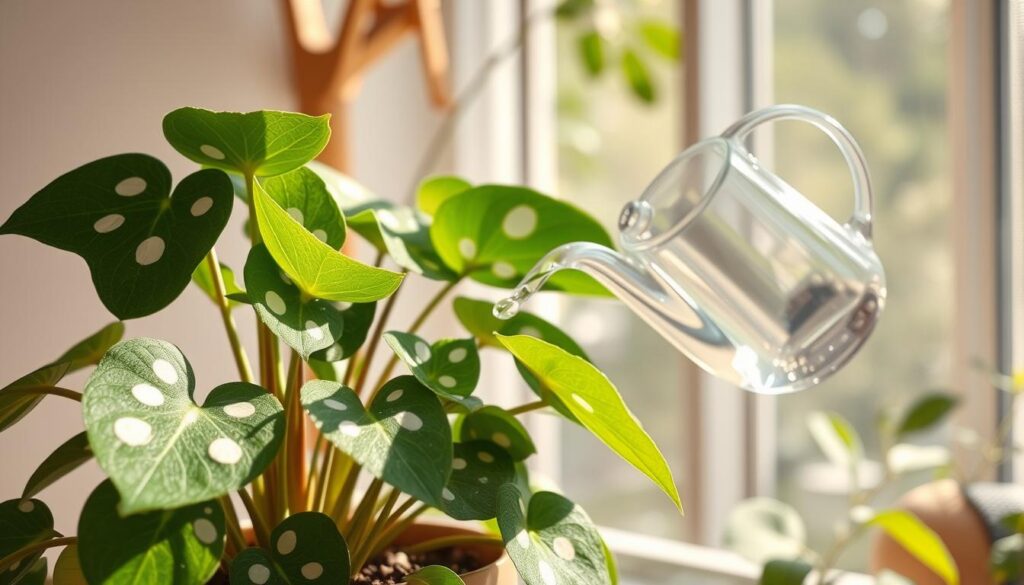
| Plant Type | Watering Frequency | Soil Type |
|---|---|---|
| Polka Dot Plant | Every 1-2 weeks | Well-draining, rich in organic matter |
| Coleus | Weekly | Moist, well-draining |
| Pansies | Every 5-7 days | Loamy, good drainage |
| Begonias | Every 1-2 weeks | Rich, well-draining |
By carefully considering your soil type and following a disciplined watering schedule, you can enhance the growth and vitality of your polka dot plant and ensure its companion plants thrive as well.
Pest Management with Companion Plants
When it comes to maintaining a healthy garden, incorporating companion plants for pest management can make a significant difference. These plants work synergistically to enhance the natural defenses of your polka dot plants against various pests. By selecting the right partners, you can create a thriving environment that minimizes reliance on chemical treatments.
Natural Pest Deterrents
Many companion plants serve as natural pest deterrents, attracting beneficial insects that prey on common garden pests. For example, Marigolds are known for their ability to repel nematodes, making them excellent partners for your polka dot plants. Other varieties, like basil and rosemary, can deter harmful insects while encouraging a healthy ecosystem.
How Companion Plants Help Combat Pests
Utilizing companion plants for pest management not only helps control unwanted insects but also promotes a stronger garden overall. By incorporating plants that attract ladybugs and lacewings, you create a habitat that supports these natural predators. This approach to polka dot plant pest control allows your garden to flourish without excessive chemical interference, fostering a more vibrant and resilient ecosystem.

Common Mistakes in Companion Planting
Creating a thriving garden requires attention to detail, particularly when practicing companion planting. Many gardeners encounter common mistakes in planting that can affect the health and productivity of their plants. Understanding these errors in companion planting can lead to better outcomes and a more vibrant garden.
Overcrowding Plants
A frequent issue gardeners face is overcrowding plants. When you place too many plants in a small space, they compete for essential resources like sunlight, nutrients, and water. This competition can stunt growth and lead to unhealthy plants. It’s crucial to give each plant adequate space to thrive. Consider the mature size of each plant type when planning your garden layout.
Ignoring Plant Compatibility
It’s vital to pay attention to the compatibility of different plants. Placing heavy feeders near polka dot plants can result in nutrient depletion from the soil, negatively impacting growth. Not all plants grow well together; some may even attract pests or diseases that can spread. Researching the needs and growth habits of potential companion plants helps avoid these errors in companion planting.
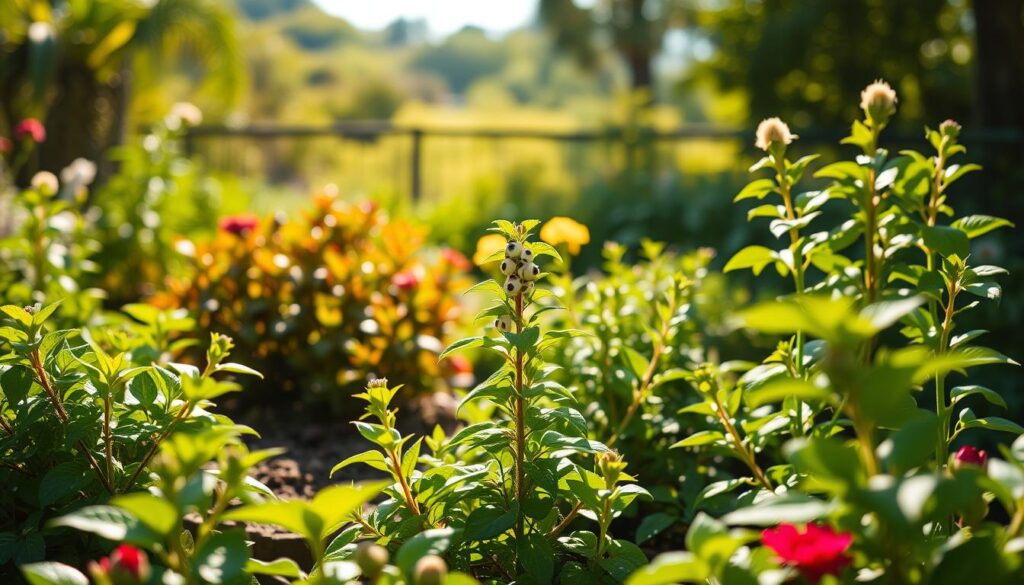
| Error Type | Description | Impact on Plants |
|---|---|---|
| Overcrowding | Planting too many species in a confined space. | Competition for resources, leading to stunted growth and unhealthy plants. |
| Ignoring Compatibility | Failing to consider which plants grow well together. | Increased risk of pest attraction and nutrient depletion. |
Harvesting and Maintenance Tips
Maintaining the health and appearance of your garden is essential, especially for vibrant plants like the polka dot plant. Adopting effective polka dot plant care tips can enhance their beauty and vitality. Two critical aspects include regular pruning and appropriate fertilization of companion plants. These practices support robust growth while ensuring your garden flourishes.
Pruning Your Polka Dot Plant
Pruning plays a vital role in keeping your polka dot plant looking its best. Regularly trimming back any leggy or overly long stems encourages a fuller appearance. Aim to prune during the growing season to stimulate new growth, allowing the plant to develop a bushier shape. Utilizing clean, sharp shears will minimize damage and promote healthy recovery.
Fertilizing Companion Plants
To achieve optimal growth, understanding fertilization methods for companion plants is crucial. For outdoor plants, a balanced water-soluble fertilizer works well, delivering essential nutrients. Indoor specimens benefit from a diluted fertilizer solution applied every two weeks during their active growth period. Ensuring that your plants receive adequate nutrients leads to robust and vibrant companion plants that complement your polka dot plant beautifully.
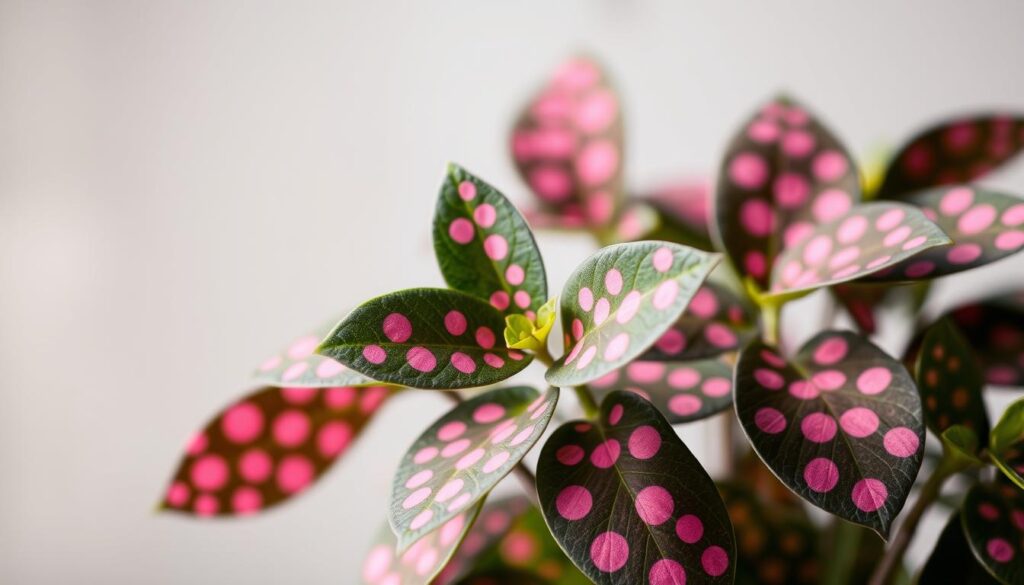
DIY Companion Planting Layouts
Designing your garden can be an exciting project, especially when considering how to create a garden plan that incorporates polka dot plants alongside their best companions. Thoughtful layouts enhance both aesthetics and plant health. Whether you decide on raised beds or traditional ground planting, each option offers unique benefits.
Creating a Garden Plan
When planning your garden, it’s essential to take into account the growth habits of your chosen plants. Start by sketching out your layout, paying attention to spacing, height, and color schemes. Use your knowledge of companion planting layouts to group plants with complementary needs together. This method maximizes your space and enhances growth.
Raised Beds vs. Ground Planting
Both raised beds and ground planting have their advantages. Raised beds allow for improved drainage and soil quality, while ground planting offers a more natural environment. Consider creating beds with varying heights to add interest and prevent overcrowding. Each method can yield a vibrant display of plants that thrive together.
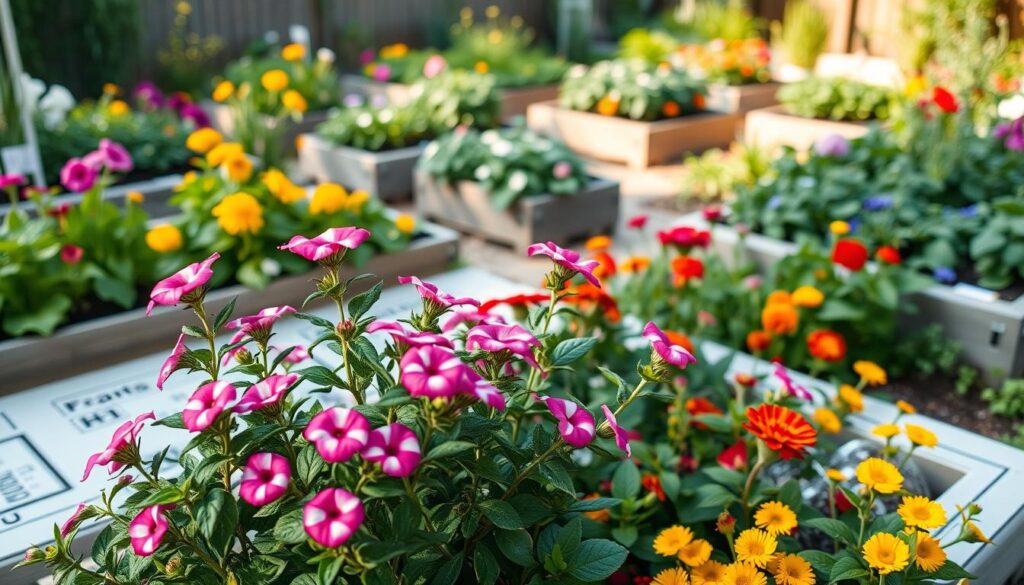
Monitoring Plant Health
Maintaining a thriving garden requires consistent attention to how to recognize plant health. Observing your polka dot plants and their companions is essential for detecting any signs of distress early on. Look for indicators such as yellowing leaves, wilting, or stunted growth, which can signify underlying issues.
Signs of Healthy Growth
A healthy plant exhibits vibrant colors and robust growth. Healthy leaves should be a rich green with no spots or discoloration. Regular observations can help you identify when your plants are thriving. Signs to look out for include:
- Bright, unblemished foliage
- New growth and blossoms
- Strong stems without signs of weakness
What to Do When Problems Arise
If you notice any troubling signs, troubleshooting gardening issues promptly is vital. Assess the conditions your plants are experiencing, focusing on factors like light, water, and soil quality. Here are steps to consider:
- Adjust your watering schedule based on the plant’s needs.
- Modify light conditions if the plants seem to be stretching or burning.
- Move affected plants to healthier surroundings if necessary.
By regularly monitoring your plants and adjusting conditions as needed, you can prevent small challenges from evolving into significant issues. This proactive approach ensures a flourishing garden environment.
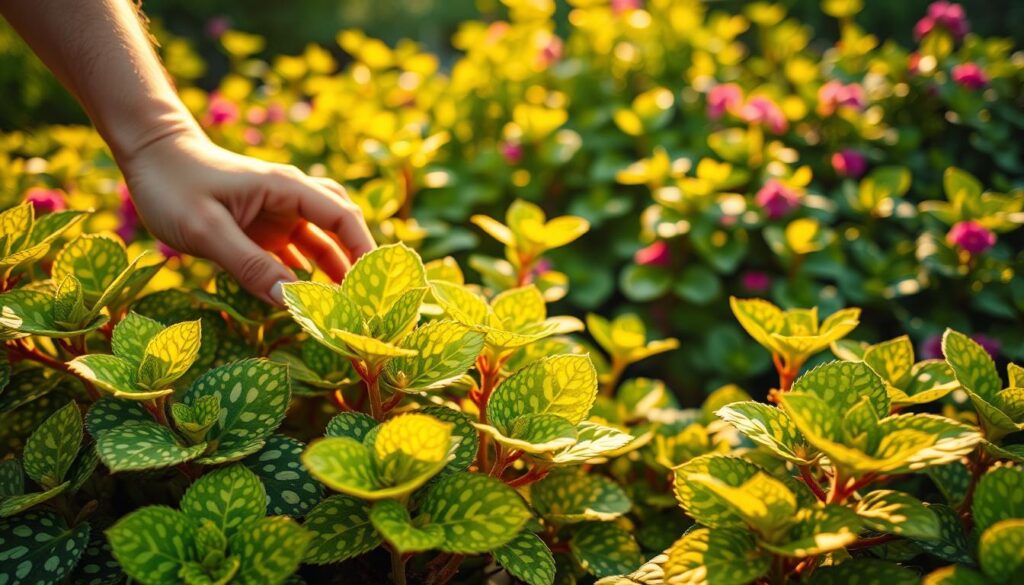
Incorporating Herbs as Companion Plants
Integrating herbs into your garden can offer multiple advantages, especially when paired with polka dot plants. These vibrant plants, known for their colorful foliage, thrive alongside various herbs that share similar growing conditions. By adding herbs, not only can you enhance the visual appeal of your garden, but you can also enjoy their numerous benefits.
Best Herbs for Polka Dot Plants
When considering the best herbs for polka dot plants, you might want to look at options like basil, parsley, and mint. These herbs not only complement the aesthetic qualities of polka dot plants but also thrive in similar light and humidity levels. Utilizing these pairings can enrich your garden’s biodiversity.
Benefits of Growing Herbs Together
The benefits of companion herbs extend beyond mere aesthetics. Many herbs can repel pests effectively, minimizing damage to your polka dot plants. Furthermore, some herbs act as attractants for beneficial pollinators, aiding in the overall health of your garden. By cultivating these herbs alongside polka dot plants, you harness a symbiotic relationship that promotes a healthier ecosystem.

| Herb | Benefits | Compatibility with Polka Dot Plant |
|---|---|---|
| Basil | Repels flies and mosquitoes | Thrives in similar light conditions |
| Parsley | Attracts beneficial insects | Compatible growing requirements |
| Mint | Deters ants and aphids | Likes the same moisture levels |
Conclusion: Building a Beautiful Garden
As you reflect on your gardening journey, it’s clear that integrating polka dot plant companion plants not only enhances the visual appeal of your space but also supports the overall health of your garden. These companions offer various benefits, including improved pest management and increased plant vitality, contributing to a vibrant ecosystem in your garden.
Recap of Key Companion Plant Benefits
Utilizing companion plants allows you to create visual contrast and richness in your garden beds. By pairing plants that thrive together, you can ensure better pest resistance while enhancing soil health. The collaborative nature of companion planting allows each species to support one another, creating a flourishing environment that satisfies both aesthetic and ecological needs.
Encouragement to Experiment with Your Garden
Now is the perfect time to embrace the beauty of experimenting with plants. Each combination you try can lead to unique textures, colors, and growth patterns that reflect your individual style and preferences. So grab your gardening tools, unleash your creativity, and take the plunge into experimenting with different plant pairings to truly build a beautiful garden that showcases your passion for plants.



